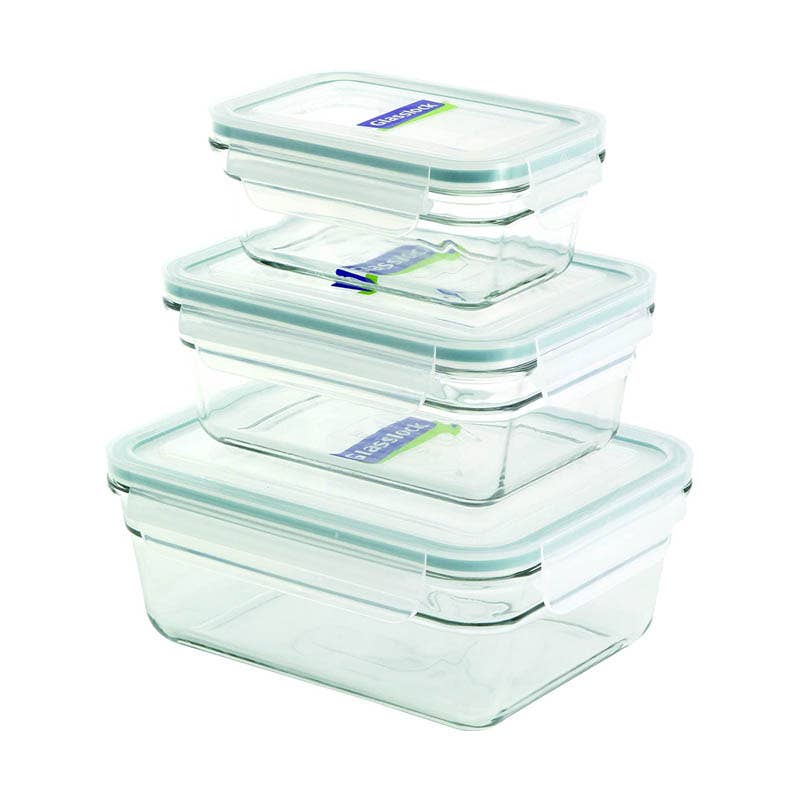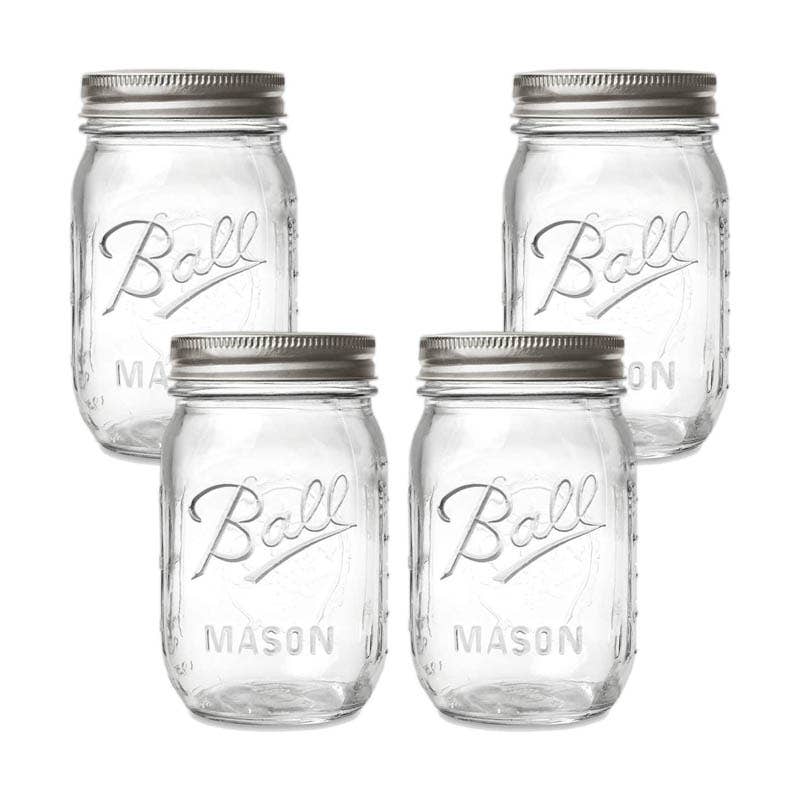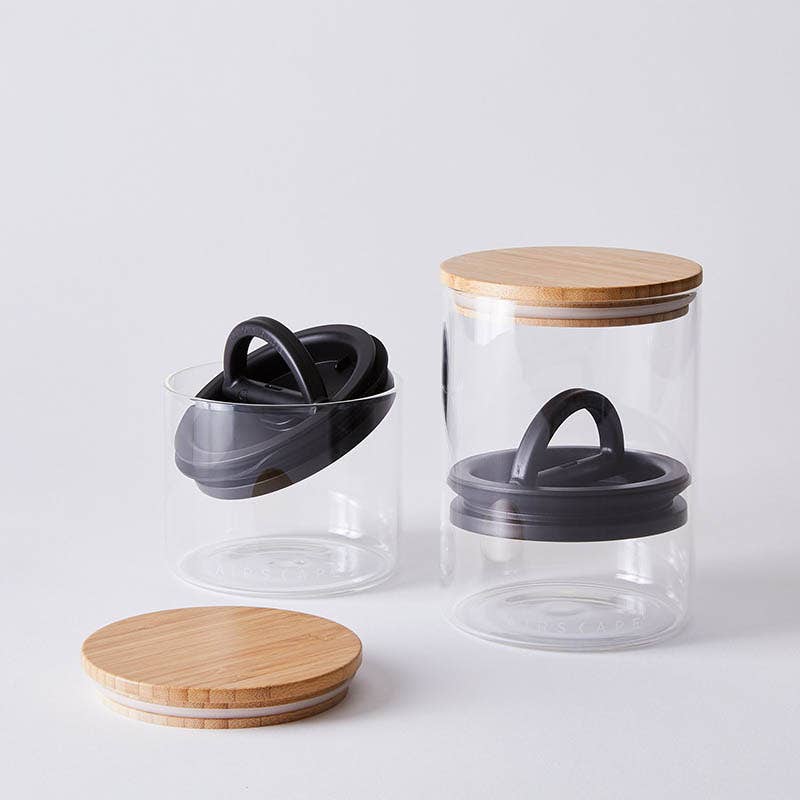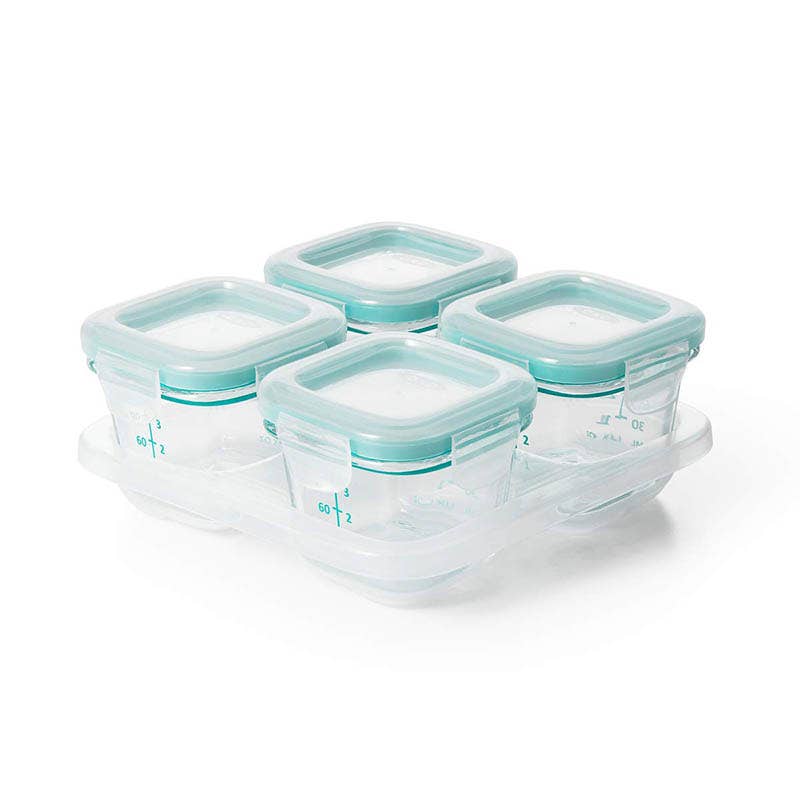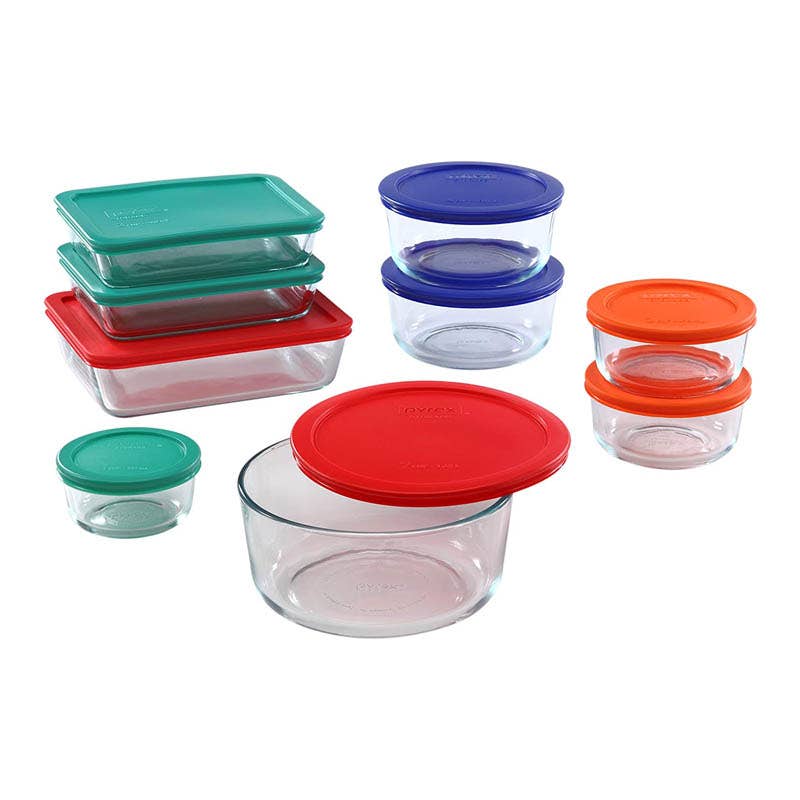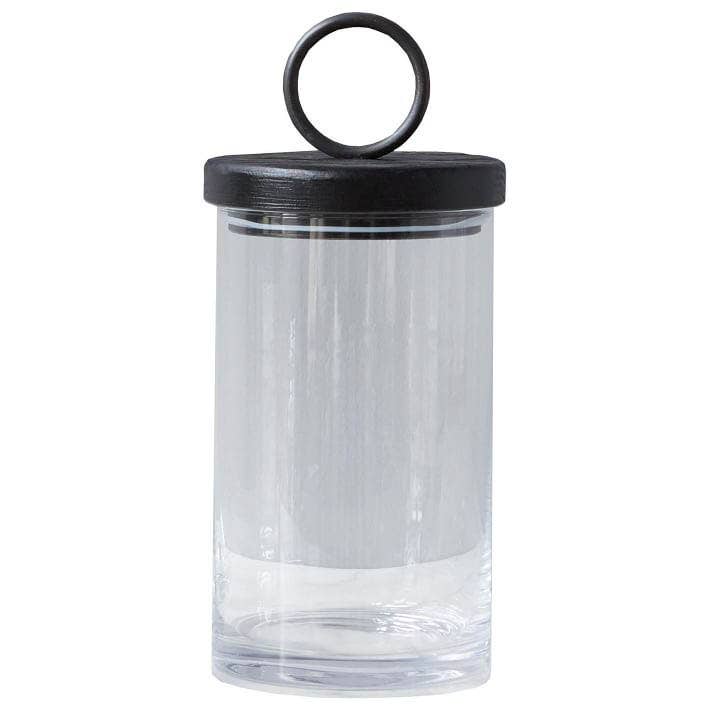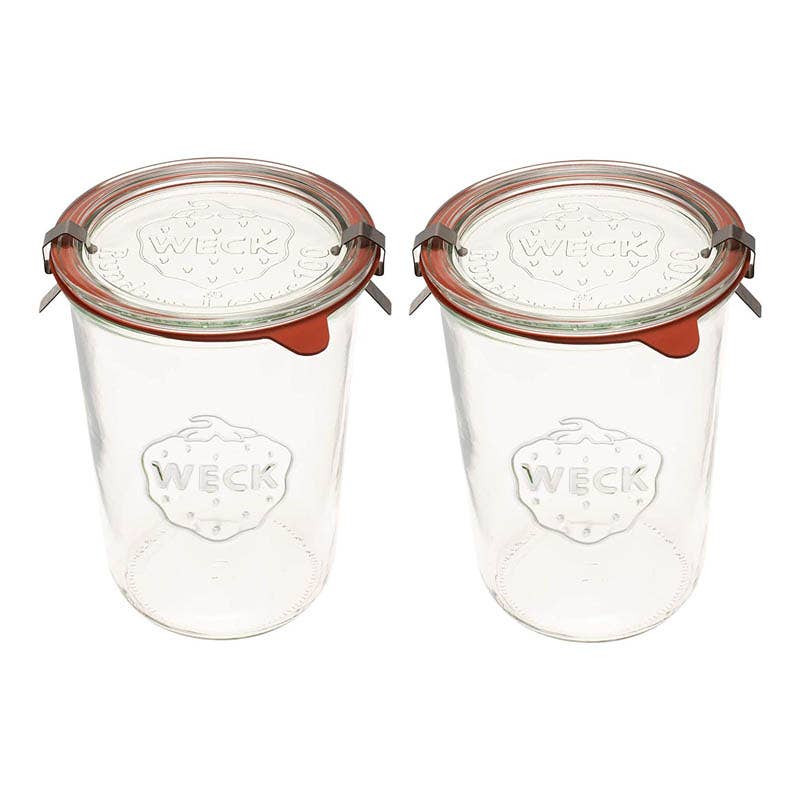The Best Glass Food Storage Containers for Every Corner of Your Kitchen
Airtight, durable, and open shelving-approved.
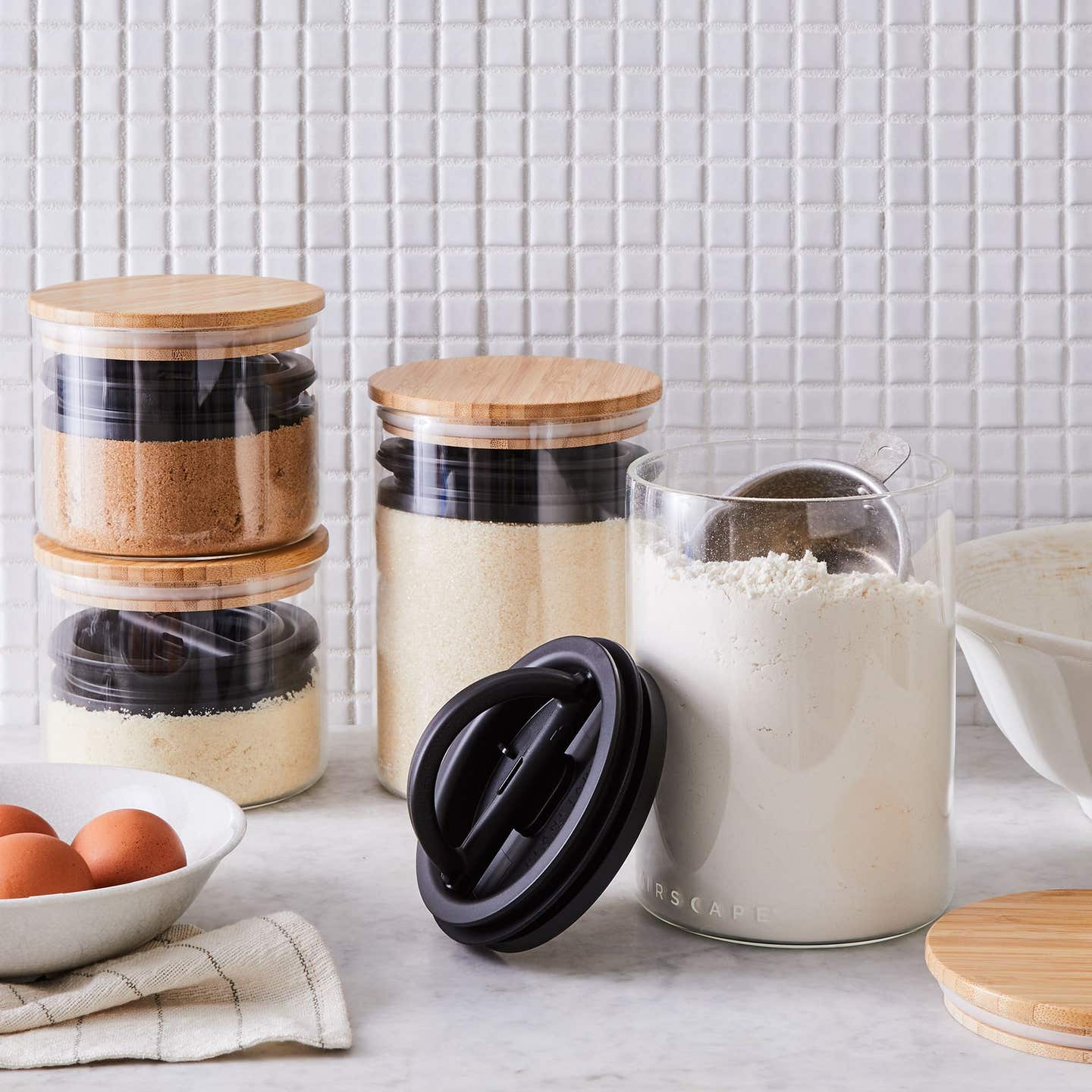
When it comes to food storage containers, whether they’re for keeping pasta at the ready on the countertop or stashing leftovers in the fridge, the winning material is clear: glass. Eco-friendly, glass won’t absorb odors, comes in an endless variety of sealable options, and—let’s face it—delivers a timeless aesthetic with which plastic just can’t compete.
We called on a handful of chefs and industry insiders who routinely put their storage through its paces, then mixed their picks in with a few of our own favorites. Here, a roundup of the best glass food storage containers we rely on, ranging from Pinterest-worthy pantry stackers to canisters chic enough to make AP flour look fancy.
Our Top Picks
- Best Overall: Glasslock Container Set
- Best Value: Ball Mason Jars
- Best Seal: Airscape Glass Food Storage Containers
- Best For Tiny Servings: OXO Tot Glass Baby Blocks
- Best Starter Set: Pyrex Simply Store 18-Piece Set
- Best To Display: Barcelona Iron Top Canister
- Best All-Purpose: Weck Canning Jars
Best Overall: Glasslock Container Set
Best Overall
Lee Wallach, founder of Home Appétit, a weekly meal-delivery service based in Philadelphia, Pennsylvania, enlists this set of rectangular, lidded containers to corral the high volume of ingredients he preps each day in his kitchen. The plastic snap-on tops close securely thanks to a thick rubber seal around the edges—which also happens to be removable for easy cleanup. “Stackability is another key element I look for,” explains Wallach. “My fridges are always full, so it’s important to keep things fresh, but also to create more space.” The flat lids accomplish this perfectly. Oven- and microwave-safe, the Glasswork line also gets high marks for even heating. Pro tip: Hit the hardware store for some painter’s tape for labelling the containers. An appealing bright blue, with not-too-sticky backing, the tape is ideal for keeping track of what’s what in a stocked refrigerator.
Best Value: Ball Mason Jars
Best Value
The OG of glass storage, Ball Corporation’s Mason jar first turned up in kitchens in 1884—and has been an American icon ever since. At about $4 apiece, the Mason Jar is also a bargain. That’s just one reason food stylist and recipe developer Carla Contreras claims this versatile vessel as her kitchen go-to. “I use these jars to hold everything from iced coffee to hard boiled eggs,” she says. “I also fill them with nuts, seeds, and dried fruits, then line the jars up in the door of my fridge. They are inexpensive, functional, and beautiful.”
Best Seal: Airscape Glass Food Storage Containers
Best Seal
With minimalist wood tops and a sleek profile, these good-looking canisters are already a step up from your average flour bin. Add tough tempered glass and an interior lid that forces extra air out and these Airscape containers are what you’d call pretty and smart. Fill them with flour, coffee, cereal, gummy bears...it’ll all stay as fresh as the day it was first opened.
Best For Small Portions: OXO Tot Glass Baby Blocks
Best For Small Portions
If you’re the type of new parent to take on preparing baby food from scratch, let us at least offer you one shortcut: these 4-ounce block containers, which are marked for portioning, won’t leak, and can go directly from the freezer to the oven or microwave. Bonus: The plastic lids are free of all the bad stuff (that’d be BPA, PVC, and Phthalates—but we bet you knew that already.) As for more grown-up options, chef Wallach likes to store pre-portioned snacks, as well as sauces and dips, in these cute little, er, babies.
Best Starter Set: Pyrex Simply Store 18-Piece Set
Best Starter Set
Yes, says Pyrex, you can have it all. This 18-piece collection in a range of sizes is not only made from the tough tempered glass the company is known for, but the price tag also happens to be starter-kitchen friendly. The performance of the lids, however, is what won over chef Eric Brownlee of Winston-Salem’s The Katharine Brasserie & Bar. “Your typical glass storage container comes with plastic lids that often break, especially at low temps,” he explains. The toppers on these colorful little workhorses go from freezer to microwave without wear or cracking.
Best to Display: Barcelona Iron Top Canister
Best to Display
Made in Hungary (the metal is hand-forged), these beauties aren’t exactly practical when you consider the price of more than $100 each. That said, the striking allure of reclaimed wood, iron, and glass cannot be denied. The good news: The food-safe wax coating on the top creates a solid seal, so they really do work for room-temperature storage. Put ‘em somewhere where you can see ‘em.
Best All Purpose: Weck Canning Jars
Best All Purpose
Originally produced in Germany back in 1895 by J. WECK and Company, a home canning supply manufacturer, this is Europe’s version of the Mason Jar. The lid system is trickier, incorporating a glass top, a rubber gasket, and little metal clips. The whole apparatus is expensive (around $9 for the 25-ounce size). Tack on the fact that this wildly popular jar isn’t even technically approved for home canning in the U.S. and you may find yourself asking what all the fuss is about. All we can offer is that we’re suckers for charm. Go ahead, fill them with your signature homemade granola at the holidays...you’re going to want your jar back.
Features to Keep in Mind
Glass Strength
If the containers aren’t labeled oven-safe, then they probably aren’t made of tempered glass. Stronger than regular annealed glass (the stuff used for less-expensive decorative jars and bottles), tempered glass is treated to withstand the extreme temperatures of your oven or freezer. Tempered glass is also less likely to shatter or scratch, making it a worthy investment.
Lid Pros and Cons
On again, off again—the lids are the busiest component, so durability is non-negotiable. Will the clips hold up? How tight is the seal? Is it made to survive in the microwave? We looked for a secure close, as well as material that could handle temperature extremes and frequent use.
Keep Reading
Continue to Next Story
